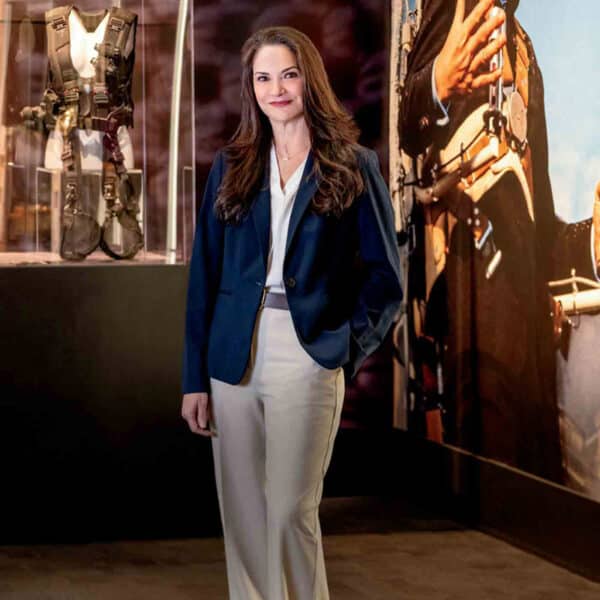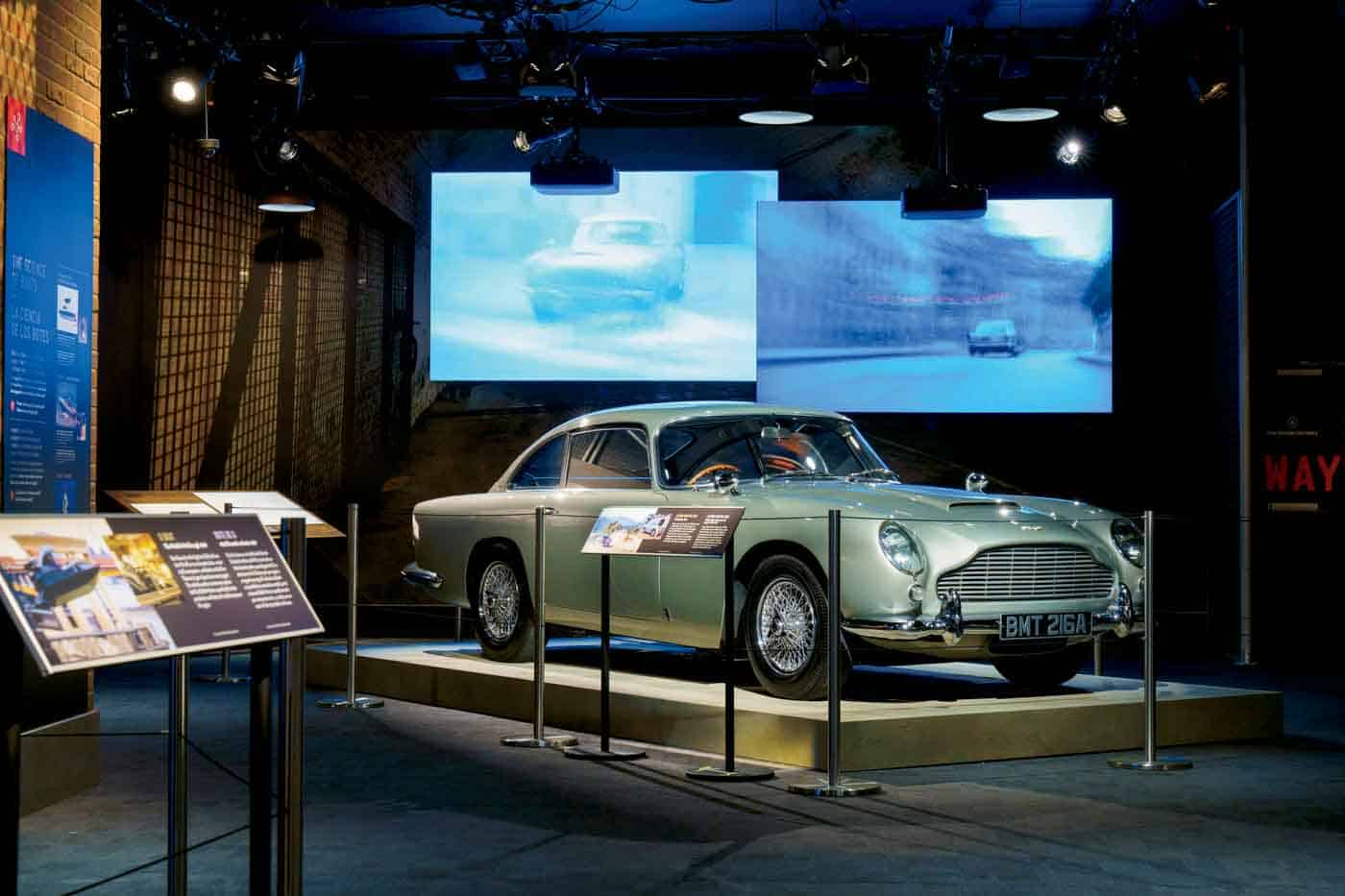MORE SPY CRAFT MAGIC
By Monica Kass Rogers
WORDS AND PORTRAIT PHOTOGRAPHY BY MONICA KASS ROGERS
EXHIBITION IMAGES COURTESY OF GRIFFIN MUSEUM OF SCIENCE AND INDUSTRY
Curator Dr. Voula Saridakis
By Monica Kass Rogers
WORDS AND PORTRAIT PHOTOGRAPHY BY MONICA KASS ROGERS
EXHIBITION IMAGES COURTESY OF GRIFFIN MUSEUM OF SCIENCE AND INDUSTRY
Curator Dr. Voula Saridakis

When staff at the Griffin Museum of Science and Industry (Griffin MSI) first proposed exploring the intersection of science fiction and science fact through James Bond films, they didn’t know if the concept would fly. But Eon Productions, the UK-based owner of the Bond film franchise, “loved the idea from the start,” says Dr. Voula Saridakis, one of Griffin MSI curators who helped bring the exhibit to fruition.
Public response to the resulting exhibit has been phenomenal. Since opening on March 7, 2024, more than 150,000 visitors have come through 007 Science: Inventing the World of James Bond, making it one of the most popular exhibits in Griffin MSI history. The museum has extended the exhibit’s run through the spring and added new artifacts, giving more viewers a chance to see the science behind the cool cars, spy wear gadgets, nifty gizmos, and stunts featured in the Bond films.
“This is the first exhibit ever,” explains Saridakis, “to explore the science, technology, and engineering behind the James Bond films’ stunts, cars, and artifacts,” with an emphasis on how the movie franchise took ordinary objects and gave them extraordinary properties to help solve challenges.
Partnering with the Ian Fleming Foundation, Eon Productions, the International Spy Museum, and others, Griffin MSI filled the exhibit with nearly 100 artifacts and 14 cars. Many of the items foreshadowed technologies that are real science today.
Those suction cup wall-walkers Bond used to lower himself into the villain’s lair in You Only Live Twice (1967) didn’t exist in the real world when the film was made. The exhibit pairs them with gecko-inspired gloves developed by the Defense Advanced Research Projects Agency that truly can support the weight of a human body scaling a glass wall.
Another display features the jet suit from Thunderball (1965) that Bond used to fly from a chateau to his car in the film’s opening sequence. Developed by Bell Labs as a prototype, decades later it inspired Richard Browning, CEO and founder of Gravity Industries, to develop his popular Daedalus Flight Pack jet suit.

And then there’s the pager Bond uses in From Russia with Love (1963). “In the 1960s, these pagers were only used by hospitals and first responders and weren’t really recognized by the general public,” Saridakis explains. “So, to see that technology in a movie before pagers became quite common is another great example of how these artifacts prefigured science that came to be.”
“Our hope,” says Saridakis, “is that people will come away from the exhibit inspired to think outside the box to find solutions, just as characters in Bond films do, using resourcefulness and ingenuity to solve challenges in their own lives, communities, and the world at large.”
To create this inspiration, the exhibit’s interactive displays go far beyond the typical. “Each interactive display gives a goal; some kind of mission objective,” Saridakis explains. “You are then tasked to meet the requirements for that mission by creating a specific gadget, vehicle, or stunt, and at the very end you learn whether you were successful or not.”
For automobile aficionados, the chance to design a vehicle is a big draw. So too is seeing many of 007’s magnificent rides up close including the battered Aston Martin DBS V12 from Casino Royale (2006), which is in the Guinness Book of World Records for performing the most barrel rolls in any movie. “In the exhibit, we demonstrate how the stunts with that car were performed and the engineering behind them,” notes Saridakis. “A screen behind the car shows how the stunt looked in the finished movie, and how it looked in real life as it was being filmed. Connecting one with the other is a great insight into movie stunt magic.”
The chance to peek behind the curtain at the science of making the unreal real has universal appeal. “It’s fascinating for people to see that intersection between science fiction and science fact with a healthy dose of popular culture thrown in,” sums Saridakis. “The appeal is multigenerational. The James Bond movie franchise is the longest-running in cinematic history. So, for more mature visitors there’s a sense of nostalgia. And younger visitors who may not have seen the films still come away inspired to find ways they can take the ordinary and make it extraordinary. Our mission at Griffin MSI is to inspire the inventive genius in everyone, and this exhibit does just that.”
For more information, msichicago.org.
Sign Up for the JWC Media Email